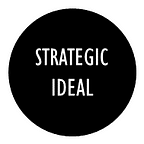How to run a meeting?
Meetings are designed and assembled to involve and connect people for things to happen (e.g. keep the projects moving, achieve consensus on the issues, make decisions). Meetings generally assume some form of communication (gathering, disseminating, or exchanging information), but foremost to achieve a meaningful result (produce opinions, ideas, or decisions). Preparing for and conducting meeting depends on the topics covered, number of participants (one-on-one, team event, all-hands), context (e.g. (de)brief, planning, problem-solving, negotiations), and expected results (as above).
Purpose of the meeting: to act upon the results of the meeting. Results of the meeting can take form of:
- decisions made
- conclusive discussions held
- aligned understanding
- communication shortcut aiming to compensate for weaknesses of other communication means where benefits of holding a meeting outweigh its costs (e.g. a quick recap for the project members in order to synchronize efforts in a highly dynamic environment)
Expected results of the meeting:
- expected results of the decisions made during the meeting are achieved
- actions are taken upon decisions made during the meeting
- meeting decisions are communicated
- decisions made during the meeting are documented and agreed upon
- decisions are made
What needs to be done:
- preparing the meeting outcomes — identify the purpose and expected outcomes of the meeting, assess whether meeting is necessary at all or other ways of achieving the meeting objective are appropriate, identify the type of the meeting (decision making, informational, creative), prepare a draft meeting memo, prepare a meeting scenario, define meeting roles (opening, leading, facilitating, notes taking, supporting with expertise, handling administrative and technical issues)
- proposing the meeting agenda — prepare meeting agenda while keeping it light, align meeting agenda with meeting purpose and objectives, assign time blocks to each topic, align meeting length with proposed agenda items, set a meeting timetable while allowing for slack (at the start, during the meeting), prepare information for the meeting
- emulating the meeting — model expected outcomes, model possible participants behavior, map participants’ attitudes towards the meeting agenda items
- identifying and engaging participants — identify appropriate participants, limit the number of participants, identify critical and possible participants, assess whether participants have appropriate authority and competence to participate, act, and add value to the meeting, schedule the meeting, send invitations for the meeting and disseminate meeting agenda, collect participants’ opinions on agenda, inquire for top key stakeholders participation, confirm participants presence, ask participants to come prepared and allow participants to prepare for the meeting, prewire the discussion, resolve issues before the actual meeting
- preparing for the meeting — book a place in advance, resolve technical issues, exclude distractors, make meeting environment comfortable
- leading the meeting — find a strong leader for the meeting, delegate meeting leadership or take charge for the meeting, set the tone for the meeting, model and moderate appropriate behavior
- opening the meeting — start on time, thank for participating in the beginning, articulate meeting goals and expected outcomes, rehearse meeting purpose and objectives with participants, set the rules of meeting conduct, start with last meeting recap
- going through the meeting — control flow of the meeting, stick with the agenda, affirm the progress, don’t get bothered in insignificant detail or off-topic items, capture the points of the meeting (decisions, assignments, discussions, topics for further research and action), look out for and eliminate distractors, seek for both ideas and critical analysis, exclude unrelated topics to other events or venues of communication, keep meetings short
- conducting the meeting — manage the participants involvement, encourage participation and seek ways to increase involvement of the participants, let others speak, balance dominators, involve quiets, acknowledge, reflect back, validate opinions, make feel understood, interrupt, push the decision, hurry the decision, defer discussion, assign or delegate discussion
- decision making — bring out the decision in the proposed by the meeting rules manner (voting, unilaterally)
- closing the meeting — collect final thoughts, make conclusions, perform debrief, sum up results and performance of the meeting, identify areas for improvement
- finishing the meeting — end on time or before scheduled end, recap at the meeting end with preliminary meeting memo, thank for participating in the end
- documenting decisions — capture what needs to be done in the meeting memo: decisions, key points addressed, topics and issues for further research, means of control
- communication of decisions — disseminate the meeting memo, obtain participants confirmations or adjustments to meeting memo, prepare final version of meeting memo
- controlling execution of decisions — follow-up on issues addressed in the memo, request for confirmation of actions taken and assignments completed
- moving on — proceed to other items on your strategic agenda
Tools to be used:
- agenda
- meeting memo (draft and final)
